Building as Learning Aid (BaLA)
Schools are specialised spaces for learning. We have innovatively treated the school space (e.g. classroom, circulation spaces, outdoors, landscape and natural environment) and their constituent built elements (like the floor, wall, ceiling, door, windows, furniture, open ground) to create a range of learning situations and materials such that they are used as a learning resource. We have developed the three-dimensional space to offer a unique setting to introduce a multiple sensory experience. These are visual, tactile, olfactory and specially designed kinesthetic movement inside or outside that provide a unique learning experience for your child. We try to ensure that learning is a truly enjoyable and memorable experience for your child. |
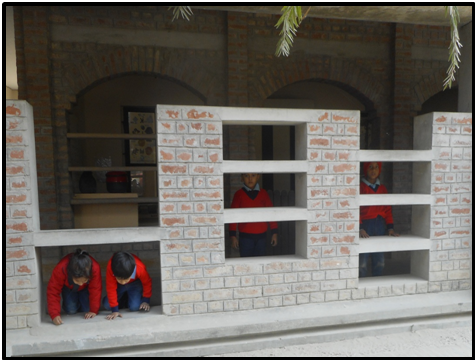 |
Mystery Wall: Children love little peeping holes, climbing and hiding places. The mystery wall in the School piques the imagination of the child and allows him to explore – thus making learning an interesting and fun activity. The wall also lets children invent and play their own games lending itself to new creativity and imagination. The objective is to develop creativity and curiosity, promote physical development especially large motor muscle development. |
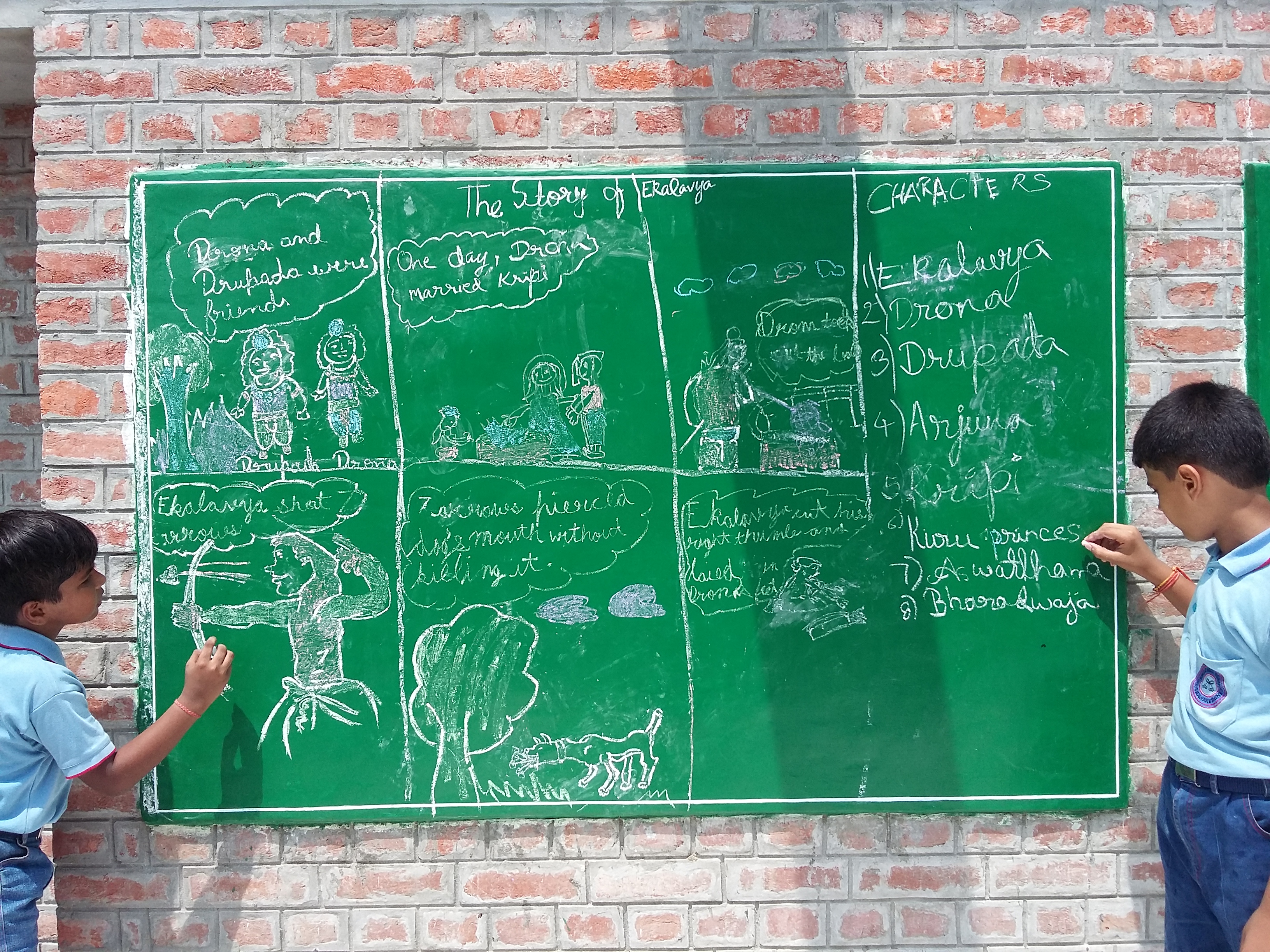 |
Children’s Wall: The Children’s Wall encourages children to express themselves with their thoughts, paintings, graffiti, etc. The objective is to promote creative thought and expression. Children often derive inspiration from their own and others expression and urge themselves to be more creative. |
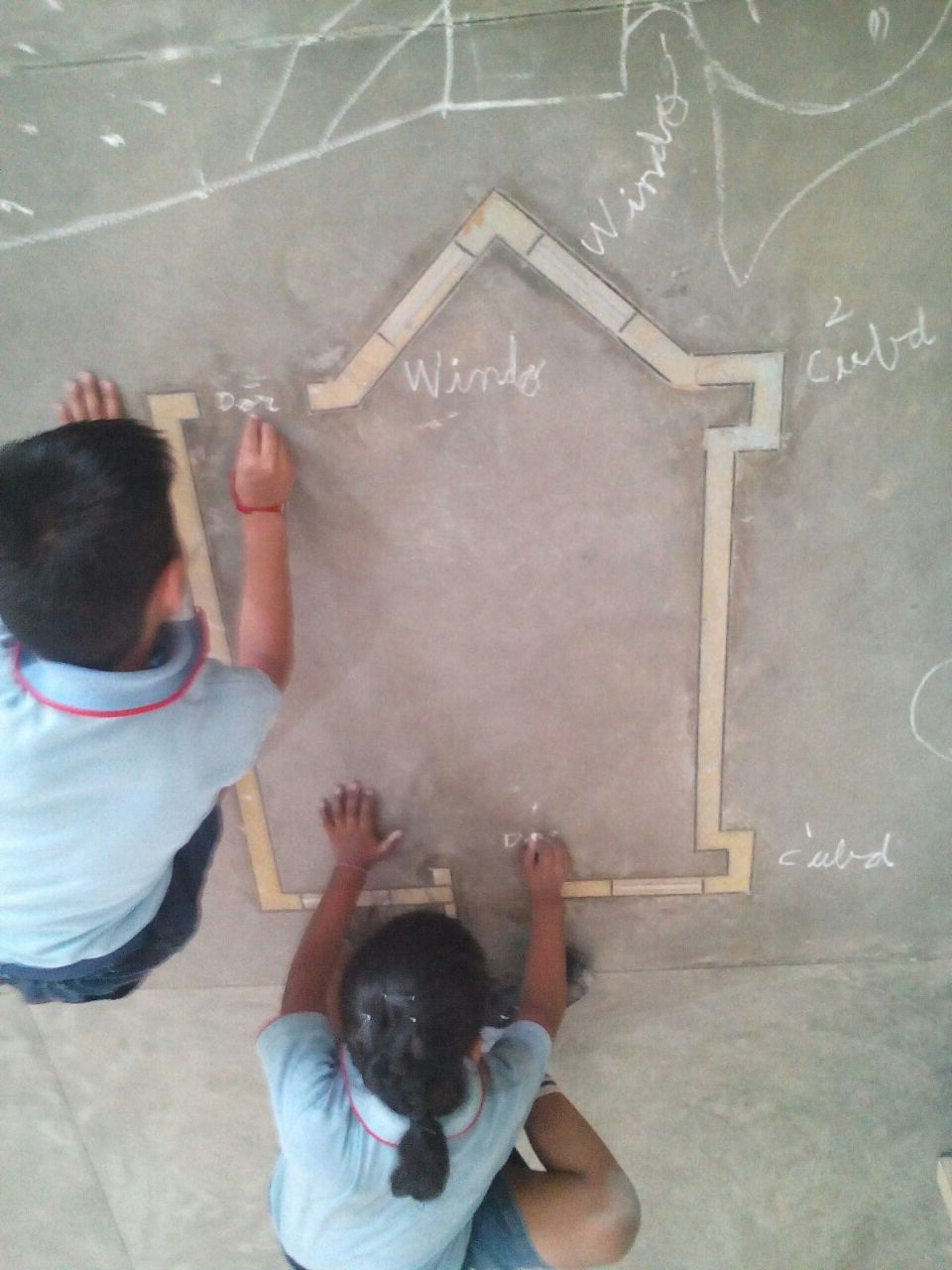 |
Classroom Map and Outdoor Map: This introduces the child to an abstract concept like mapping and how large areas can be represented on paper. The objectives are to understand the idea of scale, orientation; use of grid lines as a reference; understanding of ‘top view’, representation of prominent landmarks and utilities and how to follow directions using a map. |
 |
Class-Room Library: Reading can introduce one to a wide and imaginative world beyond the home and school. We believe that a child who reads also achieves academically since all subjects involve language. We aim to make your child’s first experiences with books pleasurable. We have a library in every class room stocked with a large number and variety of age appropriate books where children can freely take books and then return them. The objectives are to encourage children to read and enjoy books, understand that anyone can be an author, develop true reading skills and become a self learner, identify and read from a wide genre of writing and be exposed to a wider variety of expression than is possible at home or school. |
 |
Height Chart: We have a height chart in every cluster where children can measure themselves. The objectives are to familiarise children with measuring tools, understanding of the concepts of length and comparison, learn to record and analyse data and to develop logical thinking and reasoning power. |
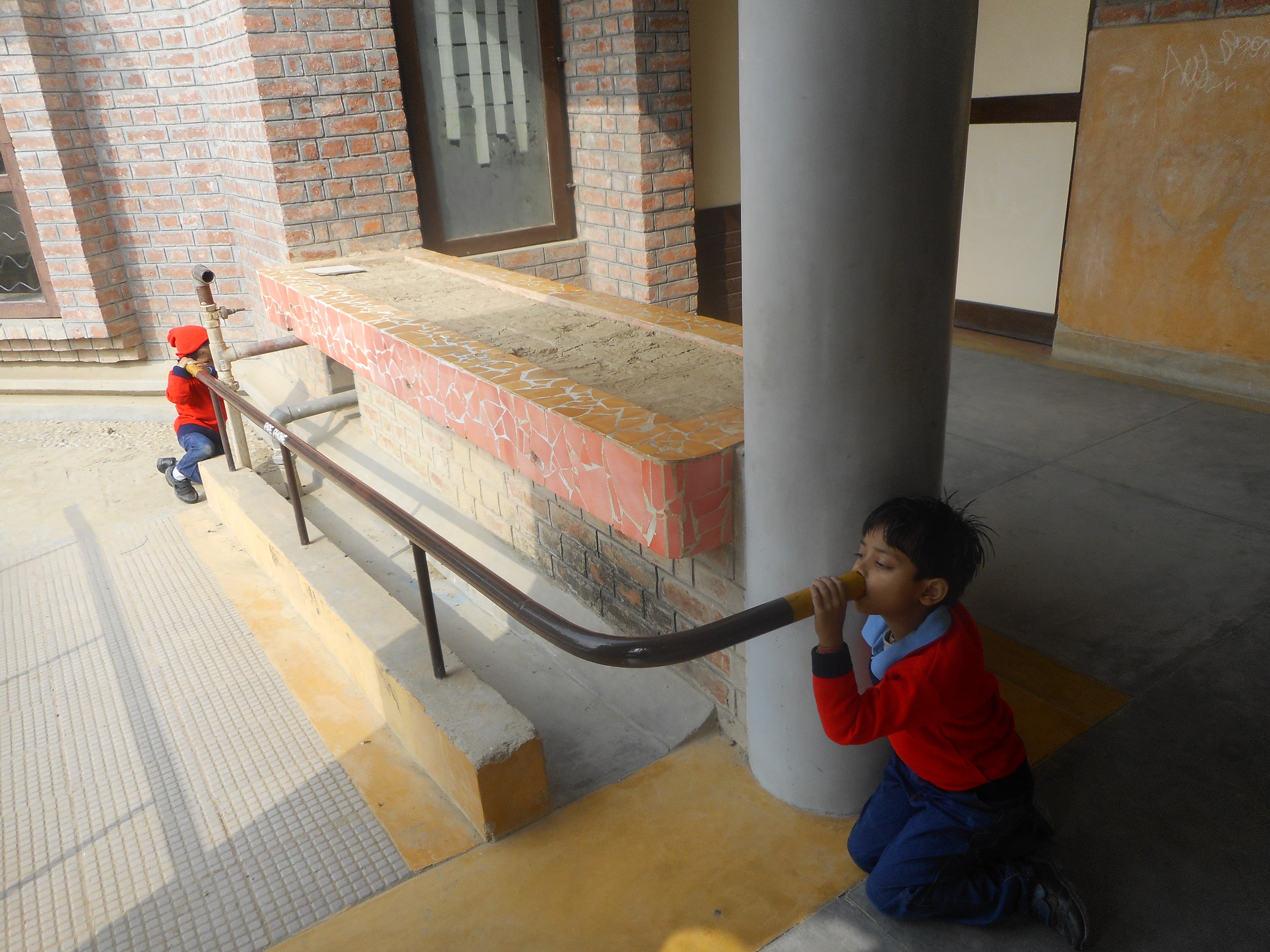 |
Pipe Phone: The pipe phone lets children learn the concepts of sound travel while having fun communicating with each other over medium distances. |
|
Milestones: Children learn about the distance between different spaces from different points within the premises due to a large number of milestones that dot the campus. These introduce the concept and sense of direction. |
|
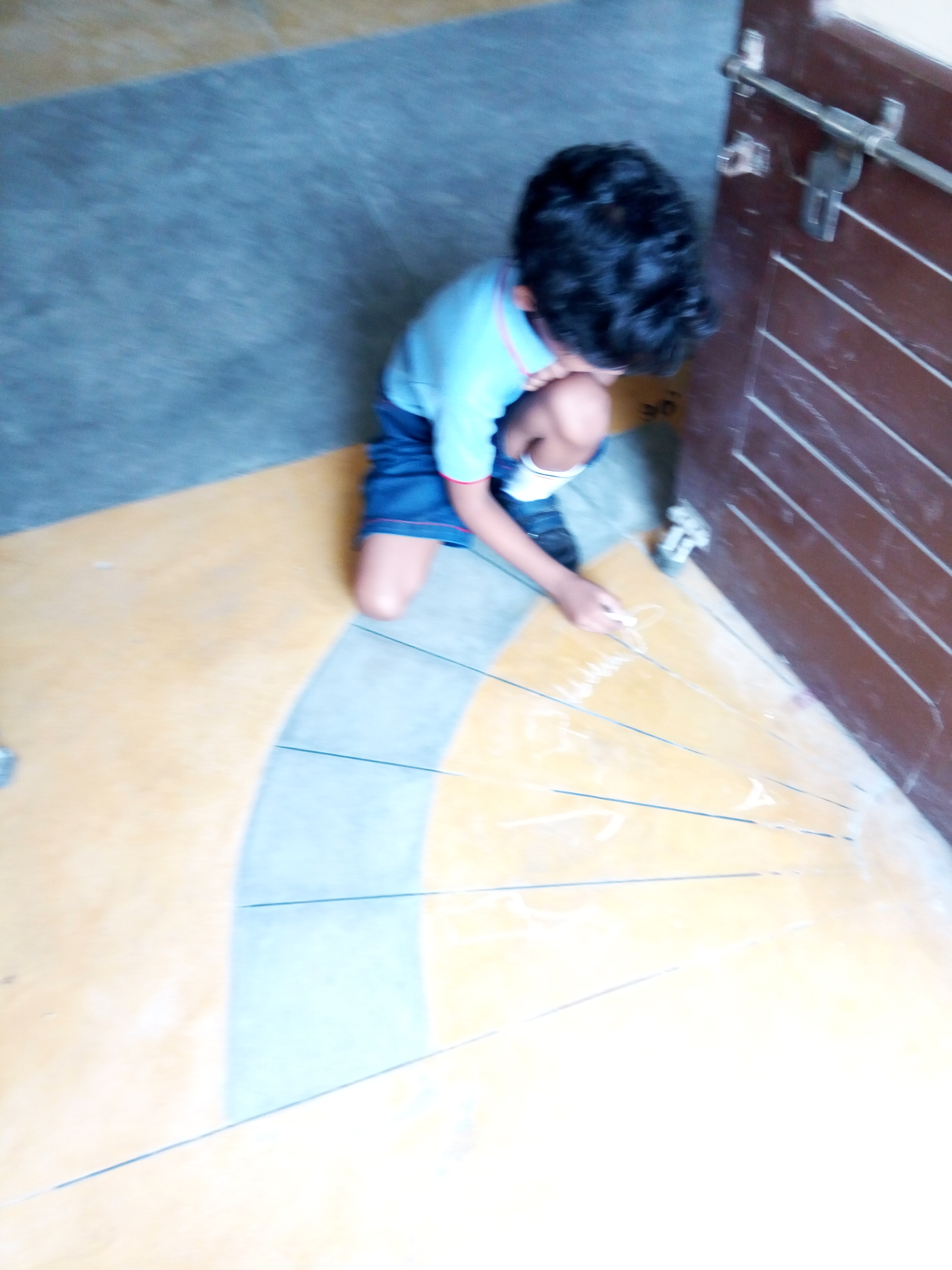 |
Door Angle: Children experience angles in familiar elements such as the doors in the school. They are used to introduce the concept of angles and are enhanced through markings on the floor. |
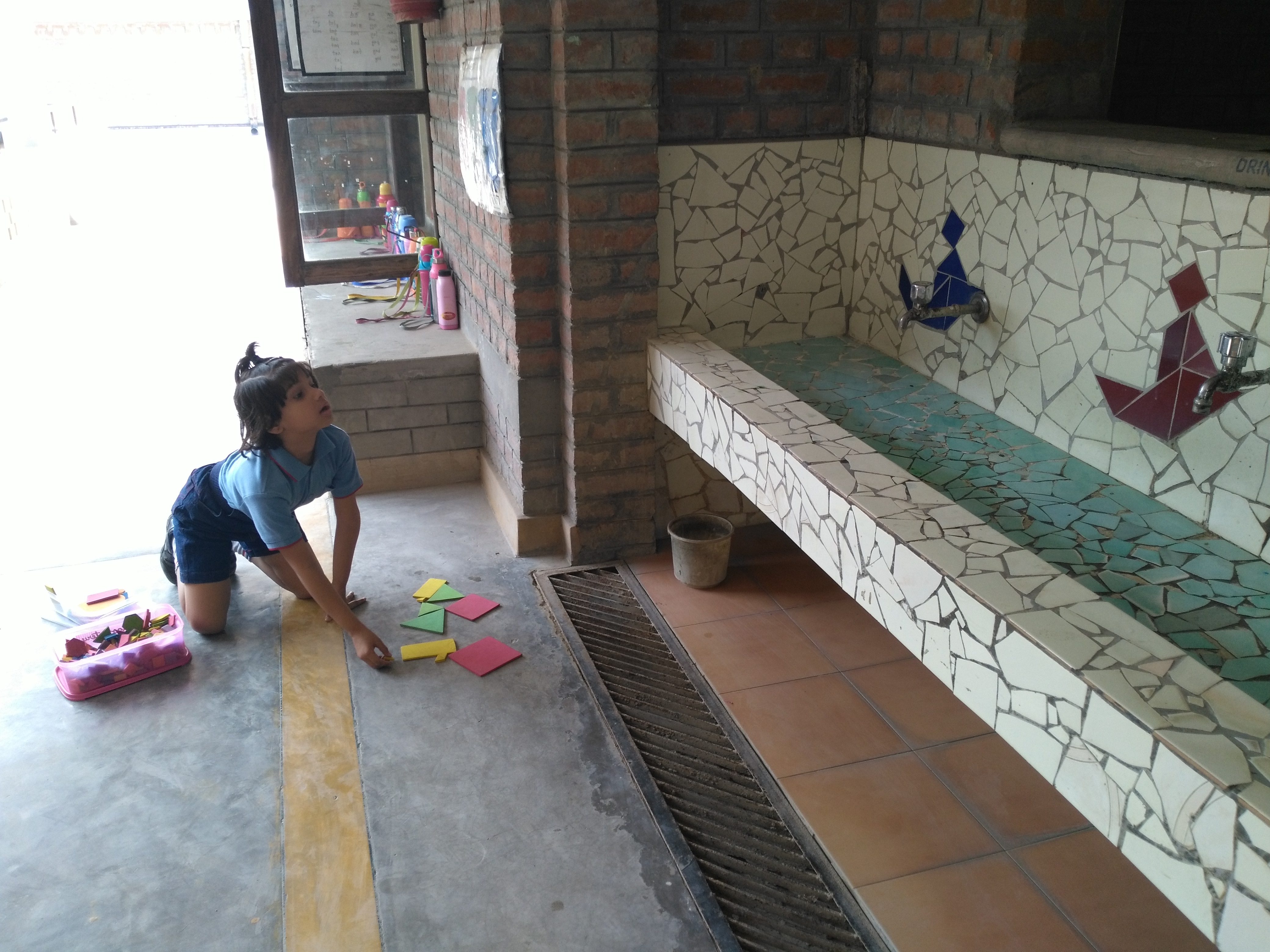 |
Tangram Tiles: The school uses broken square tiles to create visual stimulus, pattern creation within the same area which encourages creativity and makes geometry fun. Tangram can help in developing and deepening the intuitive feel for the concept of area. |
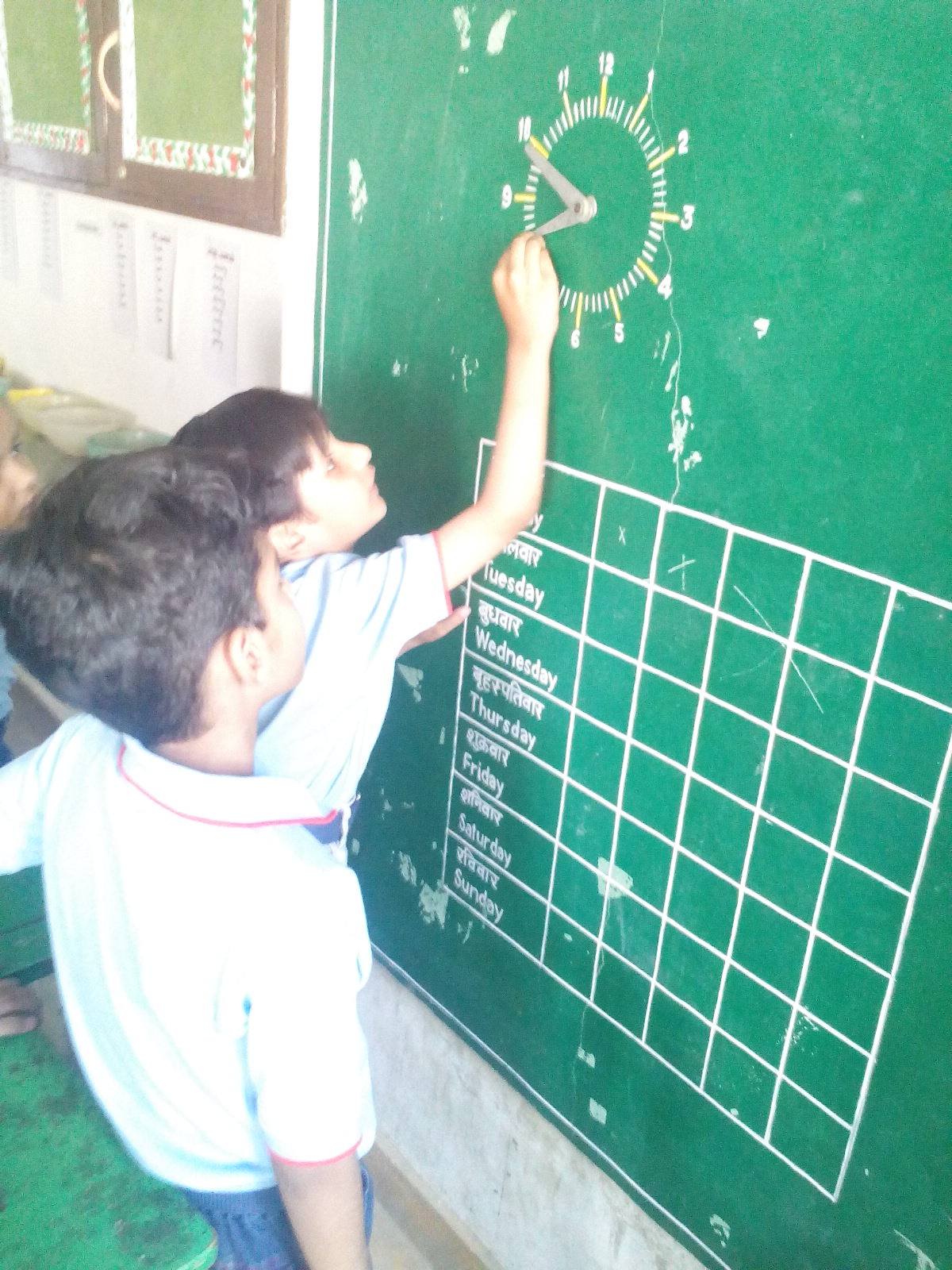 |
Classroom Calendar: Children regularly use the classroom calendar to record events and experiences which introduce to them the abstract concept of time and its measurement – especially long time spans. It also helps in making children familiar with days, months, years and the concept of before, after and the concept of time management amongst older children. |
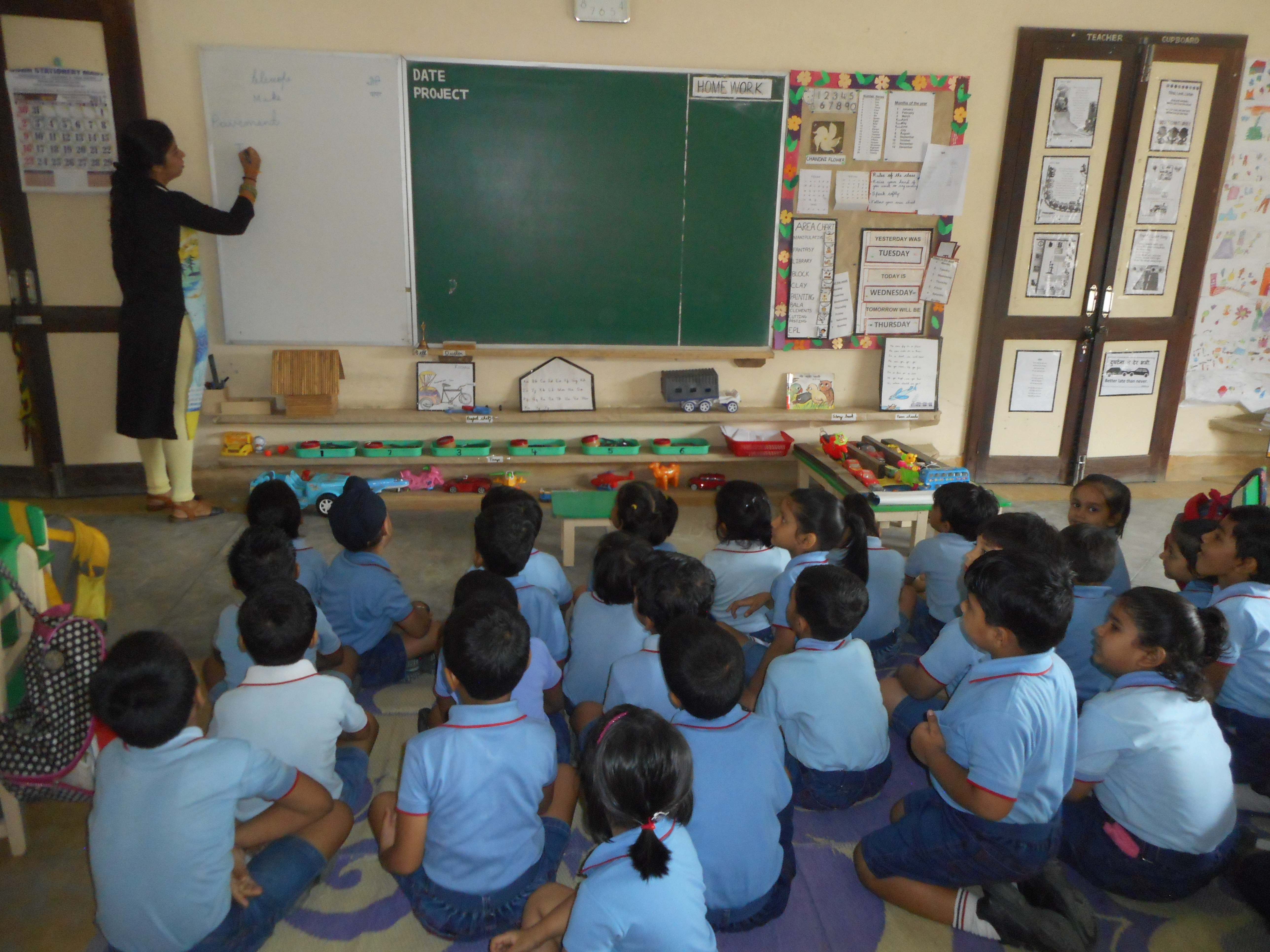 |
Word Wall: Children get exposed to letters and words in their environment through the Word Wall in every classroom. This helps children learn it faster and is a space where children enjoy interacting with words. |
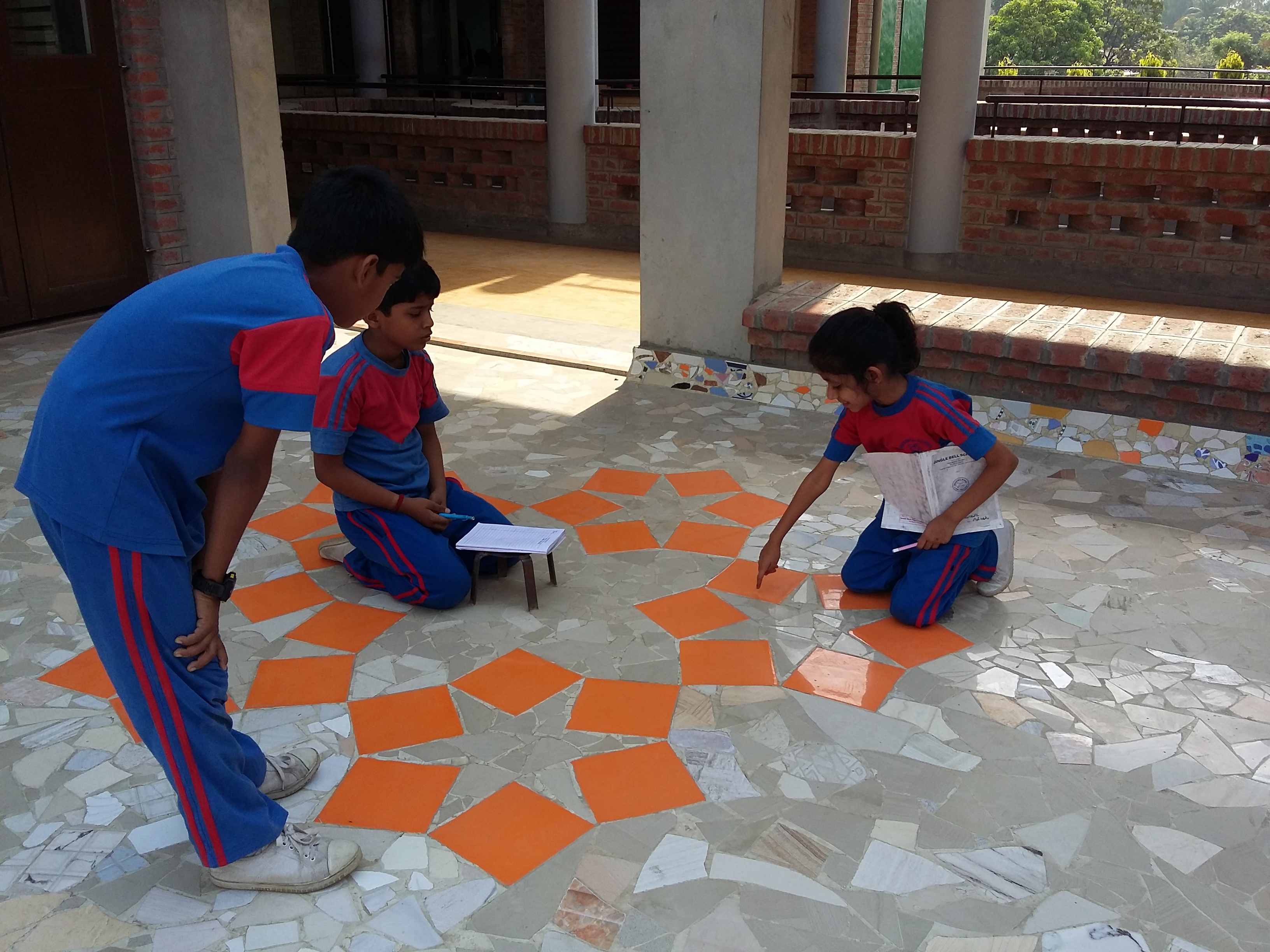 |
Board Games on Floor: The floors of the School have been designed with board games that involve thinking and planning to encourage children to play. The objectives are to help children understand and follow rules, develop strategies and learn to win and lose with dignity. |
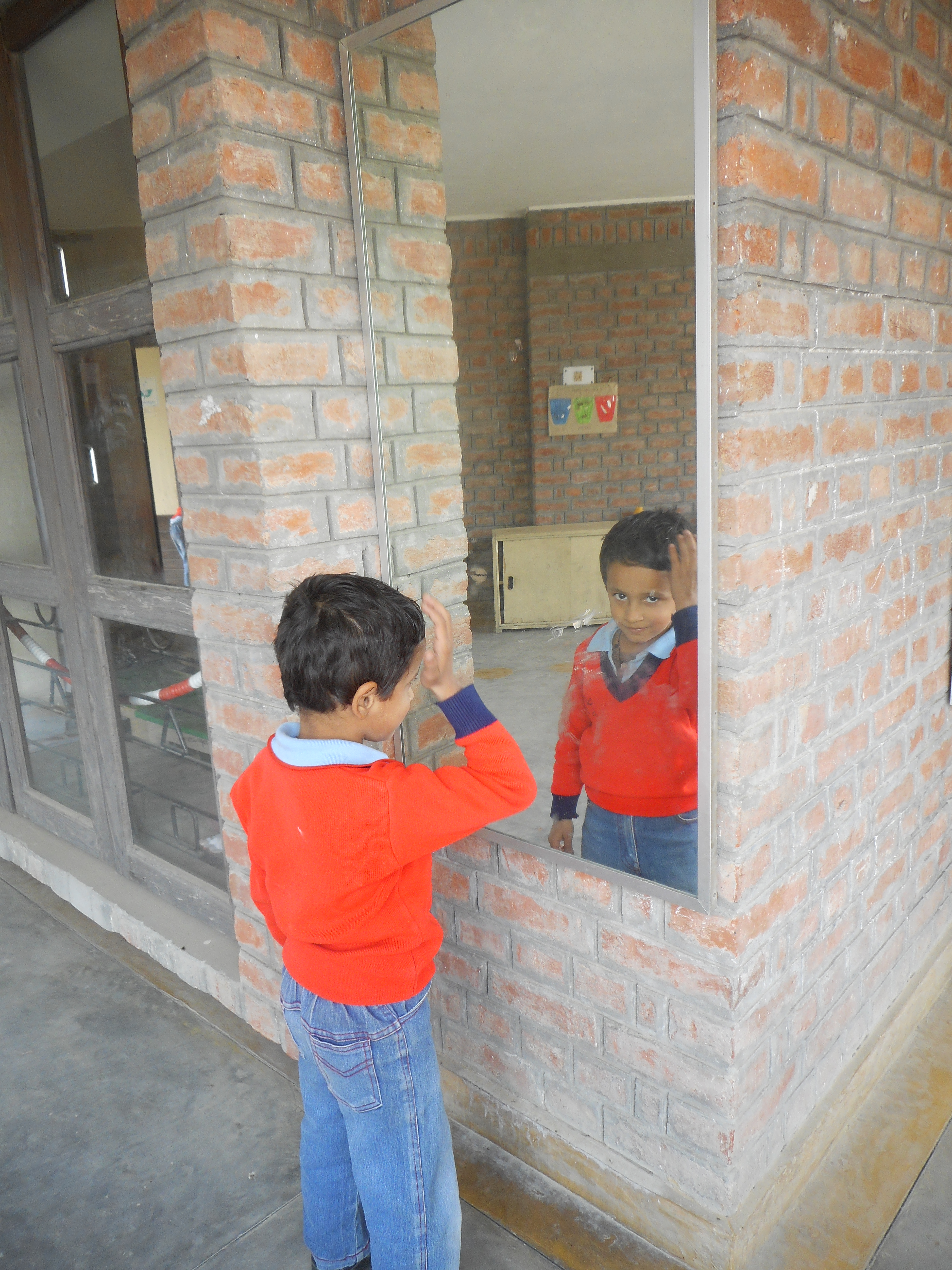 |
Mirror: A large number of child friendly mirrors have been placed all over the school. These introduce the concept of left and right, image inversion and reflection while children are having fun observing themselves in these mirrors. |
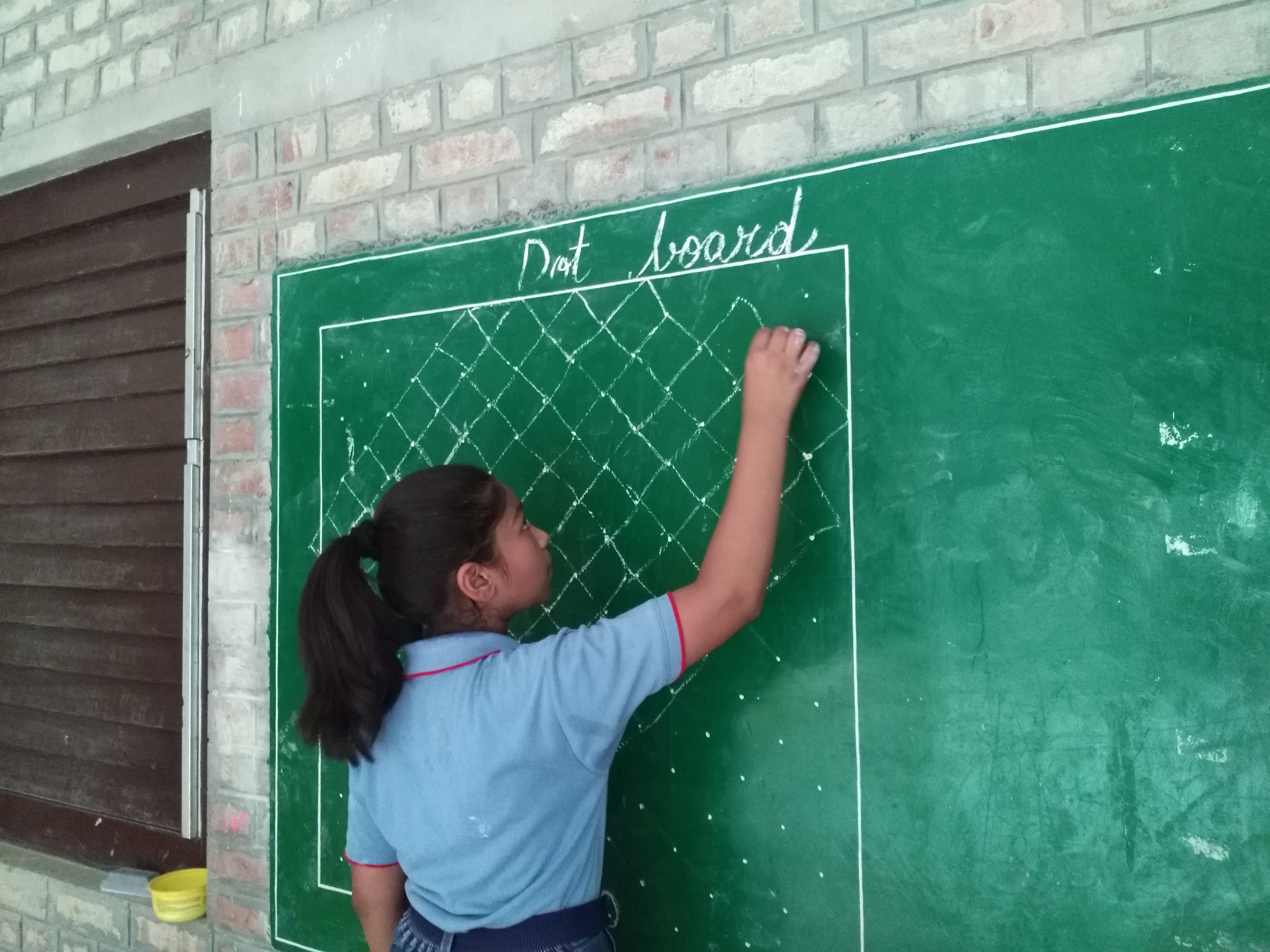 |
Dot Board: Drawing and scribbling are natural behaviour for children. To enhance this creativity dot boards are used to help children make symmetrical images, geometrical shapes as also activities related to language, maths and art. In this manner concepts are reinforced in different ways. |
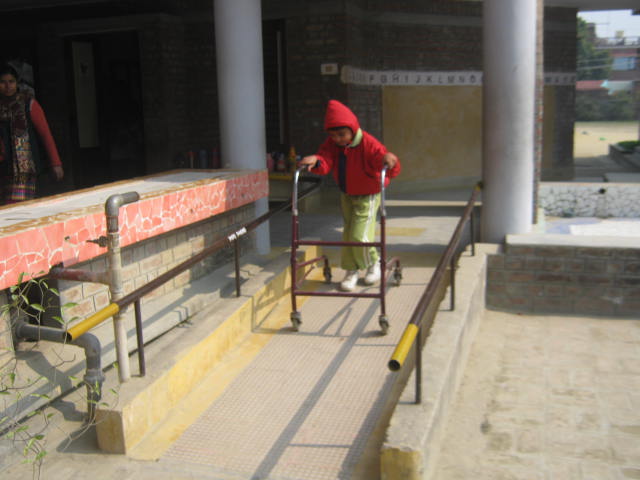 |
Ramps: The school has ramps connecting different floors which can be used by physically challenged children. The ramps provide a kinaesthetic experience of moving on slopes as also introduces the concept of slopes and steepness and their connection to angles. |
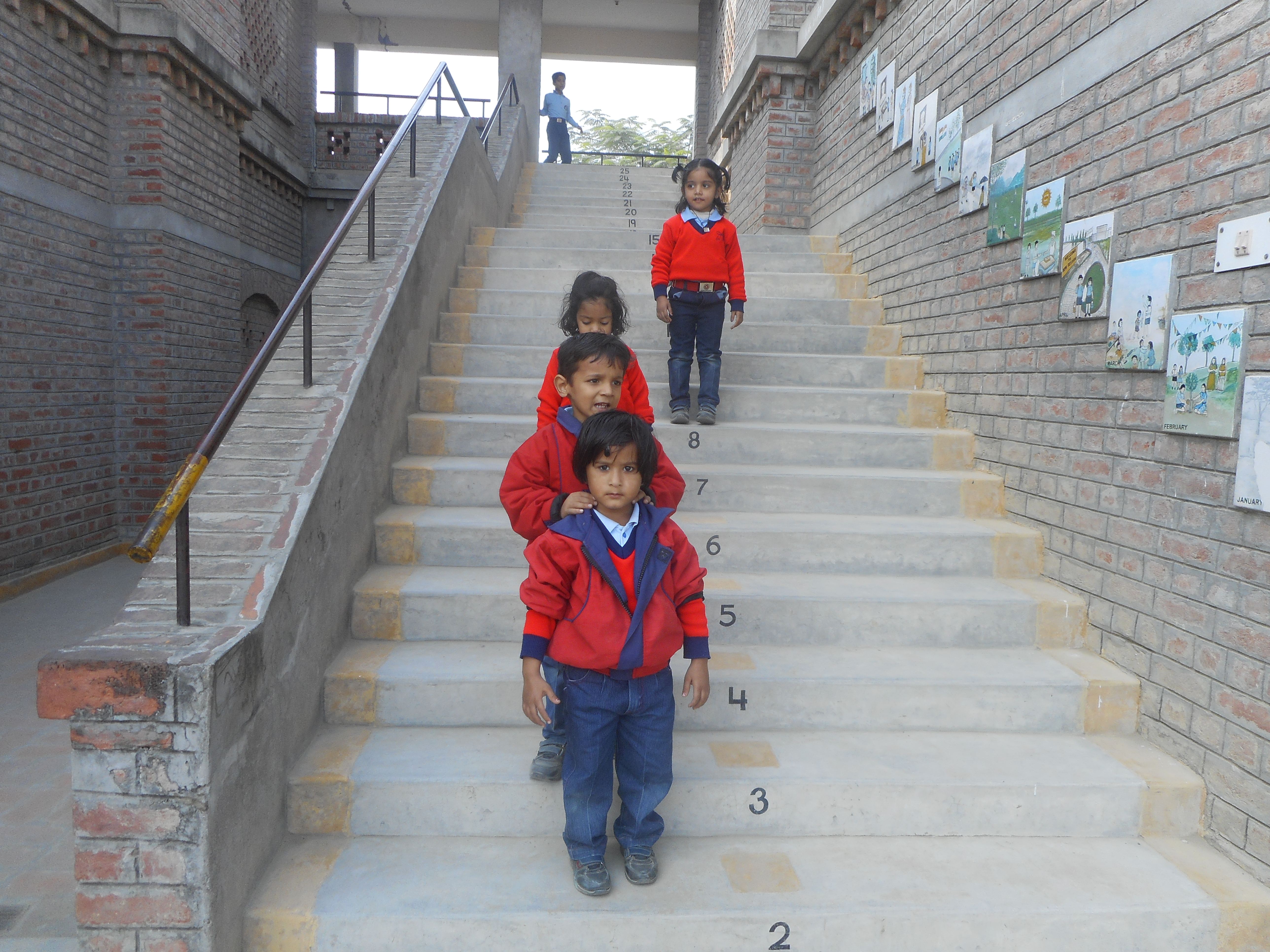 |
Stairways: The stairways in the school promote the concept of counting, addition and subtraction. While younger children learn counting in a familiar, fun environment, the older children learn incremental and subtractive concepts. |
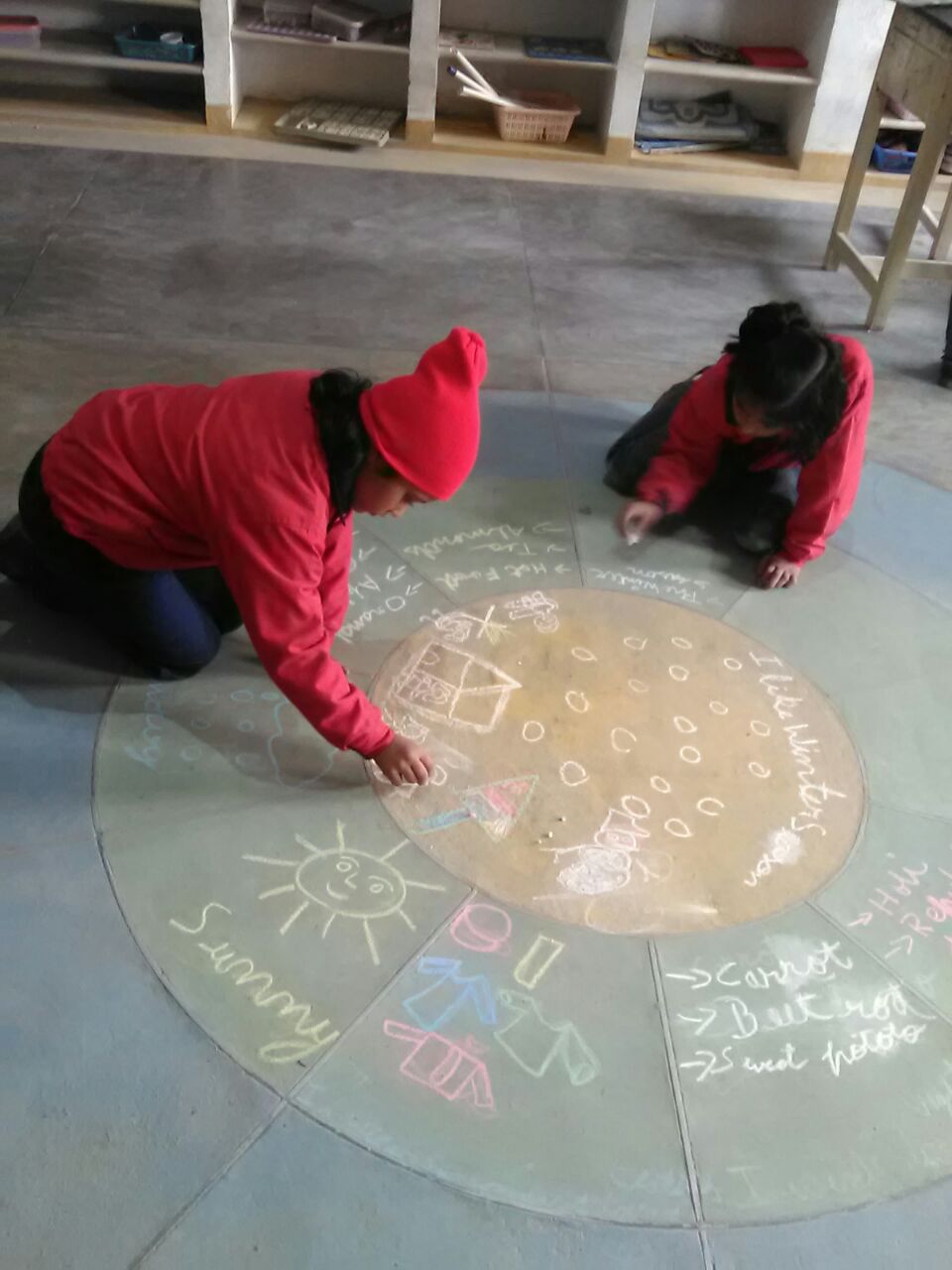 |
Goltara: This is a learning resource incorporated on the floor for numbers and language that is used by children in small groups to help them understand the number concepts and practice of addition, subtraction, multiplication and division. |
 |
Shop: Children learn from a fun environment of a shop where they learn numbers, comparisons, measurements and value. A number of objects are available with a value assigned to each of them. Some children become shopkeepers while the rest act as customers. The shop becomes a hub of interaction between children of all age groups. Concepts such as addition, subtraction, multiplication, division, percentages, credit and discounts are also introduced and reinforced. The children also carry out real life activities such as making bill memos, cash transactions, etc. |
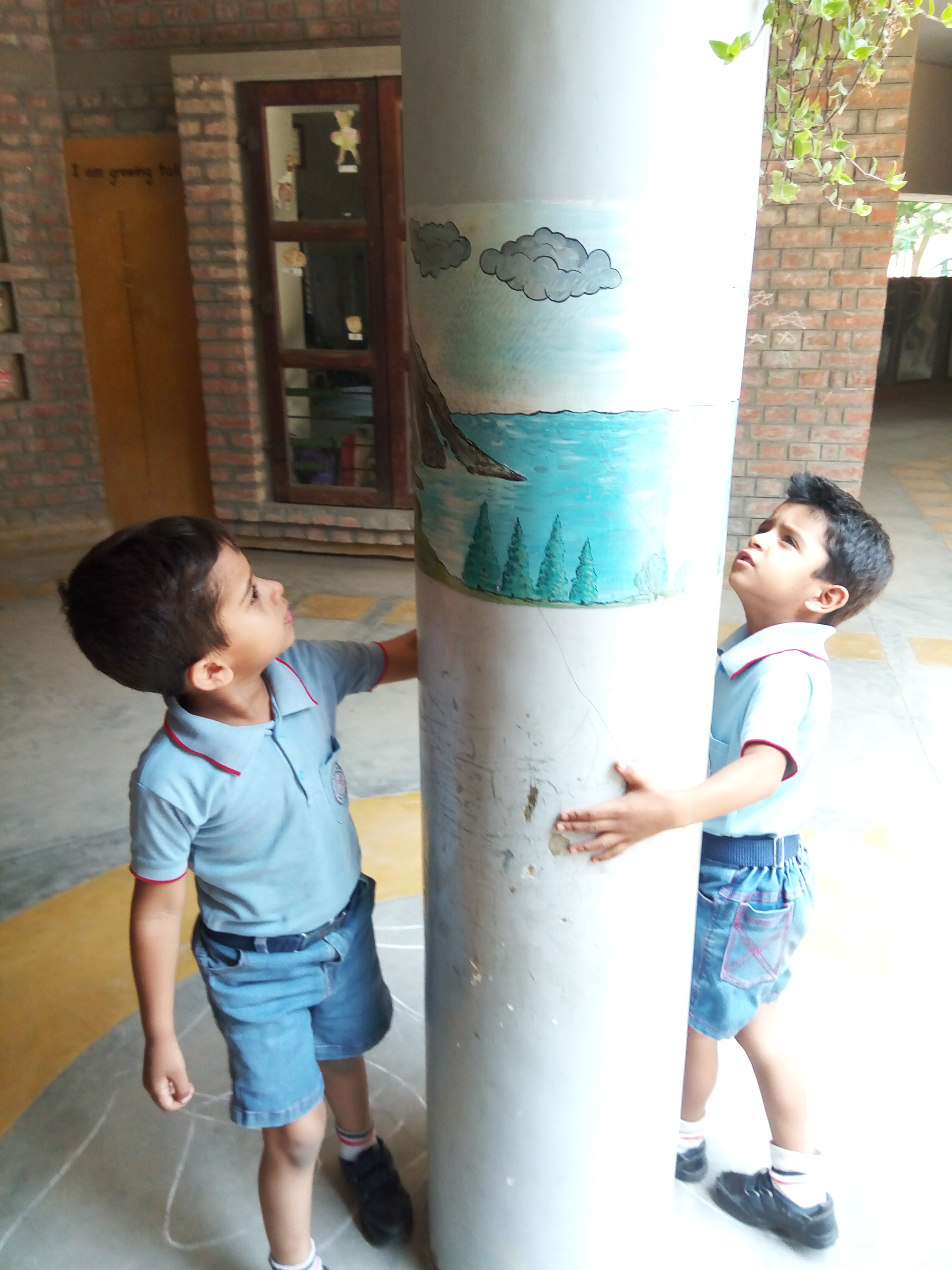 |
Educational Pillars: Each pillar in our school has been inscribed with an educational cycle such as water cycle, life cycle of a frog, phases of the moon, etc. These attract children to explore and in the process learn from their surroundings. |

















